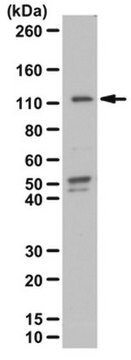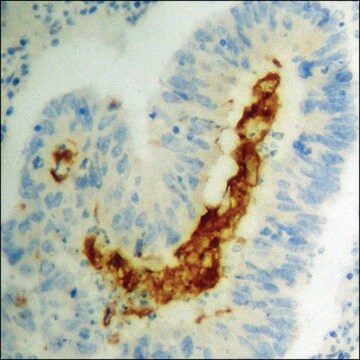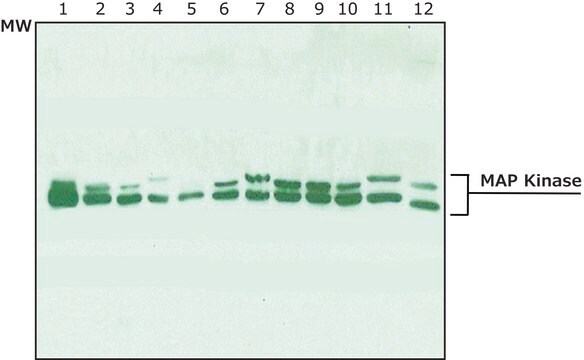07-224
Anti-phospho-STAT2 (Tyr689) Antibody
Upstate®, from rabbit
Sinonimo/i:
Anti-Anti-IMD44, Anti-Anti-ISGF-3, Anti-Anti-P113, Anti-Anti-PTORCH3, Anti-Anti-STAT113
About This Item
Prodotti consigliati
Origine biologica
rabbit
Livello qualitativo
Forma dell’anticorpo
affinity isolated antibody
Tipo di anticorpo
primary antibodies
Clone
polyclonal
Purificato mediante
affinity chromatography
Reattività contro le specie
human, mouse
Produttore/marchio commerciale
Upstate®
tecniche
immunoprecipitation (IP): suitable
inhibition assay: suitable
western blot: suitable
Isotipo
IgG
N° accesso NCBI
N° accesso UniProt
Condizioni di spedizione
wet ice
modifica post-traduzionali bersaglio
phosphorylation (pTyr689)
Informazioni sul gene
human ... STAT2(6773)
Descrizione generale
Specificità
Immunogeno
Applicazioni
- Immunoprecipitation Analysis: 10 µg from a representative lot immunoprecipitated phospho-STAT2 (Tyr689) in lysate from HeLa cells stimulated with Interferon and Interferon
- Peptide Inhibition Assay: Target band detection in lysate from HeLa cells stimulated with Interferon and Interferon was prevented by pre-blocking of a representative lot with the immunogen phosphopeptide, but not the corresponding non-phosphopeptide.
- Note: Actual optimal working dilutions must be determined by end user as specimens, and experimental conditions may vary with the end user.
Qualità
Descrizione del bersaglio
Risultati analitici
IFN-gamma then IFN-alpha treated HeLa cell lysate
Altre note
Note legali
Non trovi il prodotto giusto?
Prova il nostro Motore di ricerca dei prodotti.
Codice della classe di stoccaggio
12 - Non Combustible Liquids
Classe di pericolosità dell'acqua (WGK)
WGK 1
Punto d’infiammabilità (°F)
Not applicable
Punto d’infiammabilità (°C)
Not applicable
Certificati d'analisi (COA)
Cerca il Certificati d'analisi (COA) digitando il numero di lotto/batch corrispondente. I numeri di lotto o di batch sono stampati sull'etichetta dei prodotti dopo la parola ‘Lotto’ o ‘Batch’.
Possiedi già questo prodotto?
I documenti relativi ai prodotti acquistati recentemente sono disponibili nell’Archivio dei documenti.
Il team dei nostri ricercatori vanta grande esperienza in tutte le aree della ricerca quali Life Science, scienza dei materiali, sintesi chimica, cromatografia, discipline analitiche, ecc..
Contatta l'Assistenza Tecnica.








